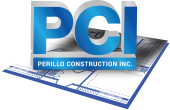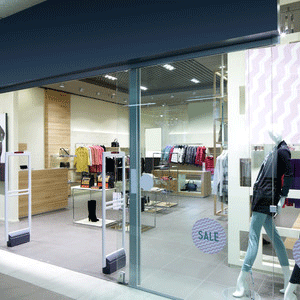There are 7 key elements to interior design: texture, color, objects, furniture, light, space and form. No matter if you are outfitting a sporting goods store or a clothing shop, all 7 of these elements must be taken into consideration for successful interior design.
The design element of ‘space’ is the area you are working with to begin with, such as basic layout, square footage and so forth. The 6 remaining elements of design boil down to creativity and skill. In order to design your retail shop to be as prosperous as possible, follow these key elements of design.
Retail Lighting
Light is one of the fundament elements of design as it creates the mood and tone of a space. It also interacts with the colors and textures in the room, highlighting focal points and drawing the eye exactly where you want it to go.
There are 3 types of artificial light: accent, task and mood lighting. Depending on the store you are outfitting, your use of these lighting styles will vary. Mix and match different types of lighting and fixtures to create an interesting combination of style and functionality.
Lighting can make a space feel bigger or smaller, depending on how it is set up and spaced. Lighting should be focused near the very edge of corners to take full advantage of the space you have. If lighting ends 50 feet before the edge line of your store, your store suddenly feels a full 50-feet smaller on all sides.
Fangsuo Bookstore in Chengdu, China is located underground with no windows. Yet, thanks to the ingenious lighting design the store has won awards for its appealing environment. Customers and critics report that the space is very inviting and interesting, and doesn’t even feel like you are trapped underground.
If your store is outfitted with windows, or if there is space to add windows, take advantage of the natural light they provide. Windows make a space feel larger, so that customers don’t feel as overwhelmed. Anywhere you can effectively incorporate a window is a ‘window of opportunity.’
Add A Pop Of Color
Colors impact the mood of the room, making people feel calm, excited and everything in between. How do you want to make your customers feel? Use that to inspire your color selections. In depth research has been conducted regarding the impact of color on mood.
If every wall in the building is white, you might want to consider giving at least one of those walls a pop of color. Adding paint to a wall is an affordable way to make a sizeable difference to the actual appearance of the store. Adding vibrant textures and patterns to the wall is even better than a basic coat of paint.
Add A Pop Of Texture
Textures are as important as color. Texture helps break up monotony and add dimension and interest to a space. There are so many ways to incorporate texture into the design of a store, from plant wall installations to puffy curtains or chic wallpaper.
A great way to add texture to a space is with molding, which can transform the look and feel of a place in numerous ways. Molding can be used to create a country, classic or modern feel, it all depends on how you install it. There are many varieties of wall moldings from ornate to more simplistic. Moldings can be added to walls, windows, floorboards, and just about anywhere.
Create Form
The form of a space is another key element of good interior design. The actual placement of furniture, objects and the layout of the entire space are all considered the ‘form.’ Think of it as the shape a space takes on.
You don’t want to overwhelm customers when they walk into your store, but it’s easy to do that if you offer a wide selection of items. If a store has good form it is user friendly and easy to navigate. A store with bad form is confusing and overwhelming, contributing to lower sales volume. Walls, partitions, furniture, shelving and plants are just a few ways to create division and form in your store.
Furniture & Objects
Furniture and other objects are the final elements of interior design, and are important components to think about as you plan out a space. The first step is to figure out what furniture and objects you need, and where they will fit best to serve purpose and style.

